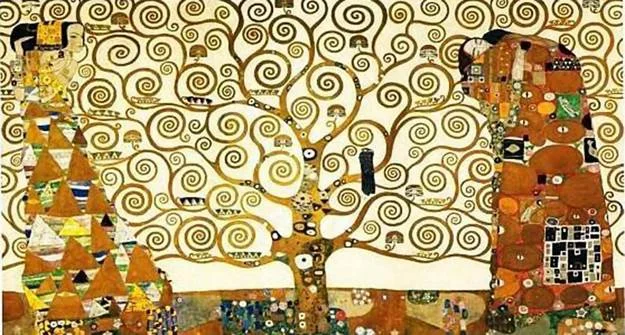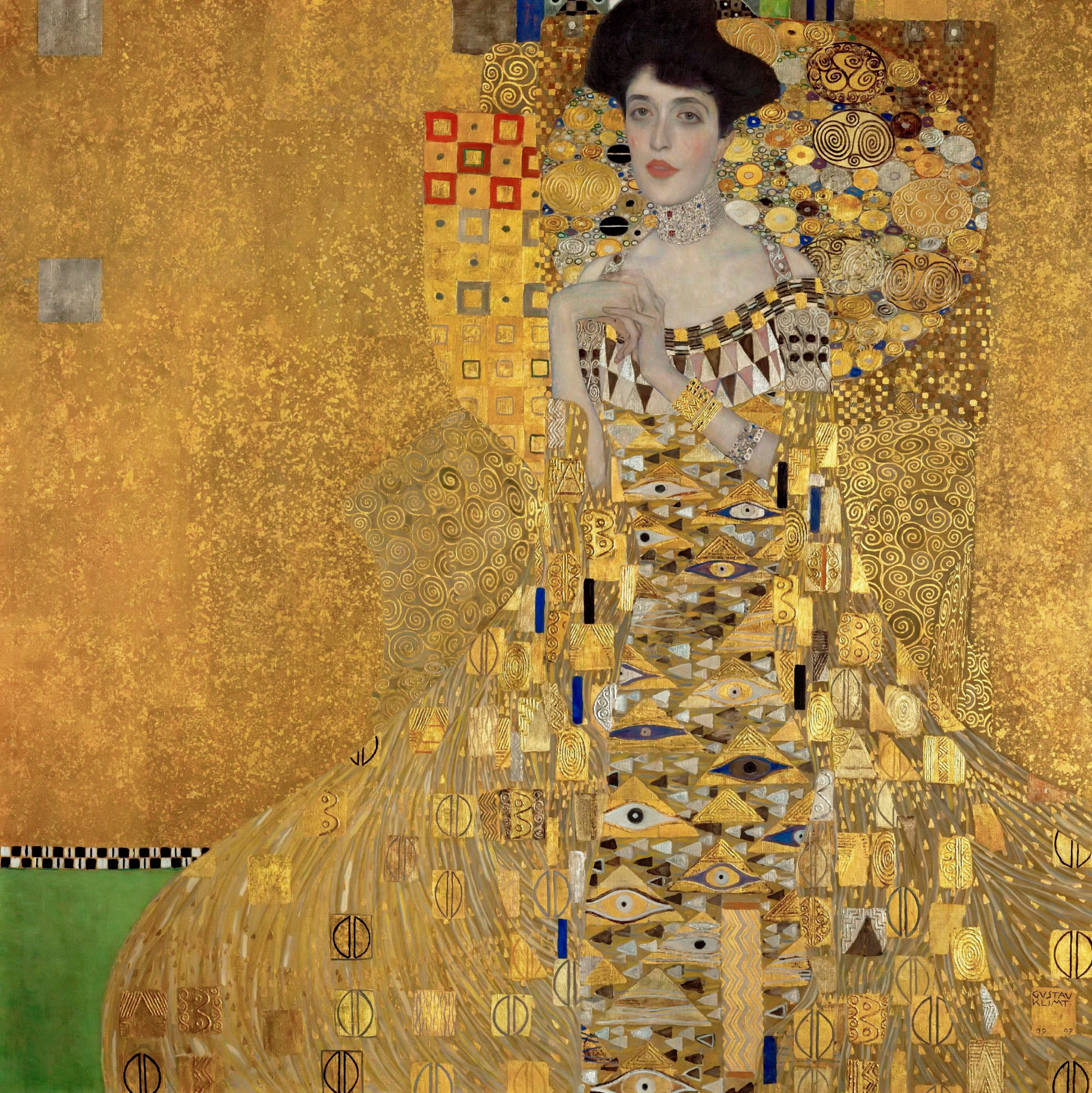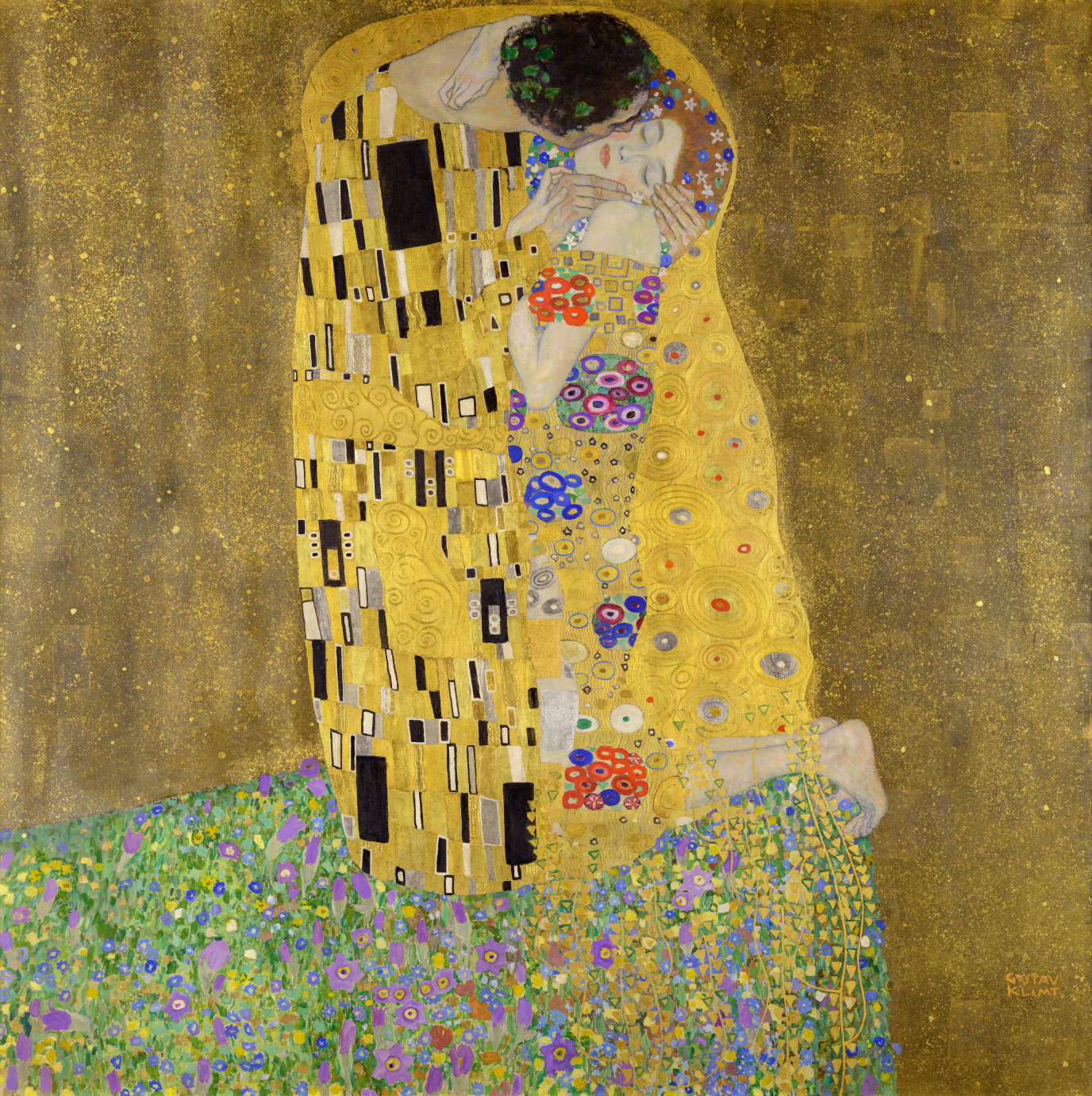Gustav Klimt Biography
Gustav Klimt, born July 14, 1862 in Baumgarten, was the second of seven children born into an impoverished family. At age 14, however, Klimt would enter the Vienna School of Arts and Crafts and his future in the arts was born. Klimt would become one of the most renowned artists to come from Vienna and has become one of the highest grossing artists at auction.
In 1876, at the age of 14, Gustav Klimt would enter the Vienna School of Arts and Crafts and begin his architectural painting studies, including mosaic and frescoes. In 1877, Gustav’s brother, Ernst would join him at the School of Arts and Crafts and quickly the brothers become recognized by the faculty for their exceptional artistic abilities. By 1879, Gustav, Ernst and colleague Franz Marsch would form a team called the “Company of Artists” and were commissioned to contribute to various design projects beginning with assisting a teacher in painingt Kunsthistoriches Museum-Vienna. Thus began Klimt’s career as a muralist including the works for Allegorien und Embleme (Allegories and Emblems).
By 1886, Gustav and Ernst begin work on the Burgtheater, a project that would earn them the distinction of the Golden Order of Merit granted by Emperor Franz Josef I of Austria.
In 1891 the Ministry of Education rejected Klimt as professor at Kunstakademie. In the same year, Klimt joined conservative artist organization, the Cooperative Society of Artists. Klimt would remain a member until the founding of the Association of Austrian Visual Artists, also known as Vienna Secessionists in 1897. The Secessionists, comprised of artists, artisans, designers and architects, formed to provide three main objectives: curate wide-ranging exhibition opportunities, bring Vienna to the foreign public and publish the magazine Ver Sacrum.
.webp)
Gustav Klimt, Baby (Cradle) (1917-18) oil on canvas, National Gallery of Art, Washington, DC.
The Ministry of Culture and Education commissioned Klimt in 1892 to decorate the Great Hall of the University representing the four traditional faculties: Theology, Philosophy, Jurisprudence and Medicine. Klimt would paint the last three and after completion was incriminated for “pornography” and “excessive perversion”. Klimt reacted by painting The Goldfish, a painting wherein the female subject looks knowingly over her shoulder exposing a naked back side. This would be the last government commissioned mural Klimt would compose.
n 1902, the Secessionists held their 14th exhibition in honor of Max Klinger’s Beethoven sculpture. Klimt painted the Beethoven Frieze, a composition painted directly onto the walls of the venue with light and easily removable materials. Luckily, however, the painting was preserved although it would not be shown again until 1986.
From 1905-11, Klimt would work on the Stoclet Palace, the home of a rich industrialist that commissioned Vienna’s finest for its construction. Klimt would create a three part mosaic including the famous Tree of Life that incorporated marble, precious jewels and gold enamel. Inspired by Japanese ornamentation, the installation includes organic lines and intricate detail. The Stoclet Palace is the last remaining example of Klimt’s wall installations.

Tree of Life, 1909
Throughout the same time, 1905-1907, Klimt would create arguably his most recognizable work in what would be coined “The Golden Age”. Beginning with the Portrait of Fritza and culminating with the Portrait of Adele Bloch-Bauer in 1907. While Klimt first experimented with gold leaf in 1885, throughout the Golden Age, Klimt would incorporate the use of gold to illuminate the feminine figures he was commissioned to depict.

Portrait of Adele Bloch-Bauer, 1907

The Kiss (1907–1908)
This would also mark an age where Klimt would begin to explore sexuality in art with works such as The Virgin, Judith and Nuda Veritas. Klimt would robe his subjects, it was found upon x-rays of his pieces after his death, only after painting the piece in its entirety with the female figure fully nude. By all accounts Klimt was, despite never being married, a ladies man allegedly fathering 14 children, three of whom he recognized during his lifetime.
In 1911, Klimt would paint Death and Life, a work that would win first prize at an international art fair in Rome, solidifying his reputation as an internationally respected and exceptional artist.
Klimt’s Mother died in 1915 and would mark a transformation in the simplification of Klimt’s future artworks. Incorporating a darker palette with more serious undertones, Klimt would go on to create Adam and Eve and The Bride in 1917. Shortly after, on January 11, 1918 Klimt suffered a stroke that left him paralyzed on his right side, leaving him unable to paint. By February Klimt succumbed to pneumonia and died on February 6, 1918. Klimt is buried in Hietzing Cemetery.